I shopped at Aldi and saw why the chain is one of the fastest-growing retailers in the US
Alex Bitter

- German grocer Aldi is planning to add hundreds of stores to the thousands it already has in the US.
- The chain focuses on keeping costs and prices low, making it popular as food remains pricey.
Aldi just keeps growing.
The German discount grocery chain already has thousands of stores in the US. Now, Aldi is planning to open 800 more locations over the next four years, bringing its store count in America to 3,200.
Aldi says it keeps prices low through its cost-limiting business model, which relies on selling lots of store-brand goods and asking employees to hop between ringing up customers and organizing stockrooms.
It's a pitch that has attracted many consumers as food prices have risen over the last few years.
I decided to head to an Aldi store in Maryland, near Washington, DC, to see what it's like to shop at the fast-growing supermarket. I also contacted them for comment but Aldi didn't immediately respond to Business Insider.
Here's what I found.
Do you work at Aldi and have a story idea to share? Reach out to this reporter at abitter@businessinsider.com
The store I visited is located in Hyattsville, Maryland.
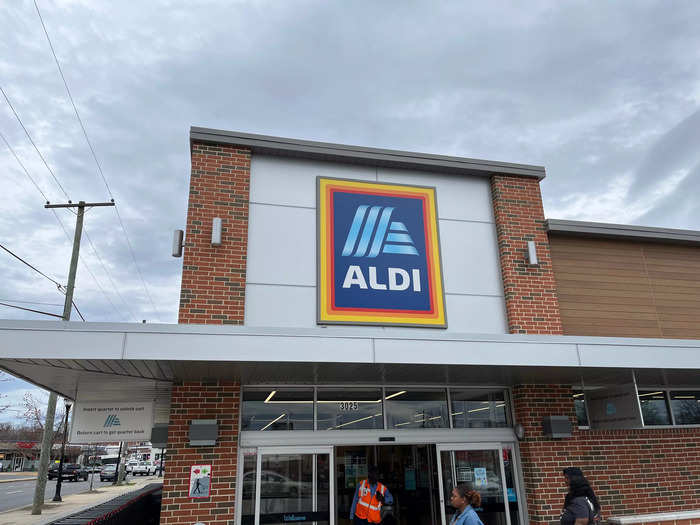
This store is located near a busy intersection and a Metro station, so there was a stream of customers moving through the store, even at 2 p.m. on a Friday.
The first step was getting a shopping cart.
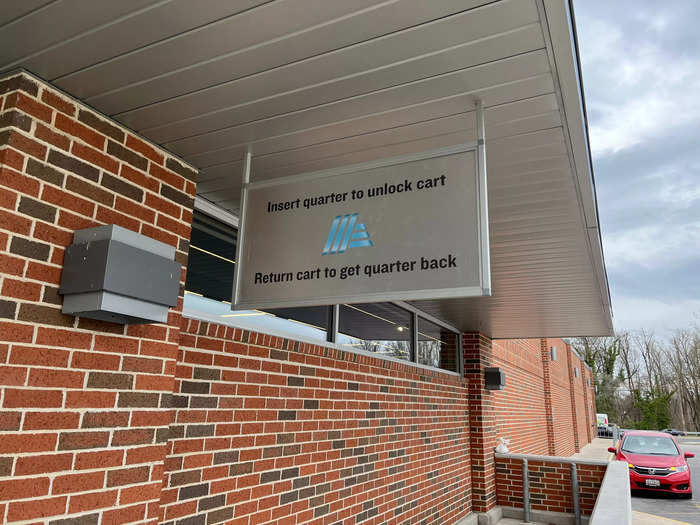
Aldi requires shoppers to deposit a quarter in order to unlock a shopping cart, which is then returned once you put the cart back.
This saves Aldi labor costs — employees don't have to spend time running around the parking lot collecting carts.
I got my quarter ready and inserted it into the slot on a cart.
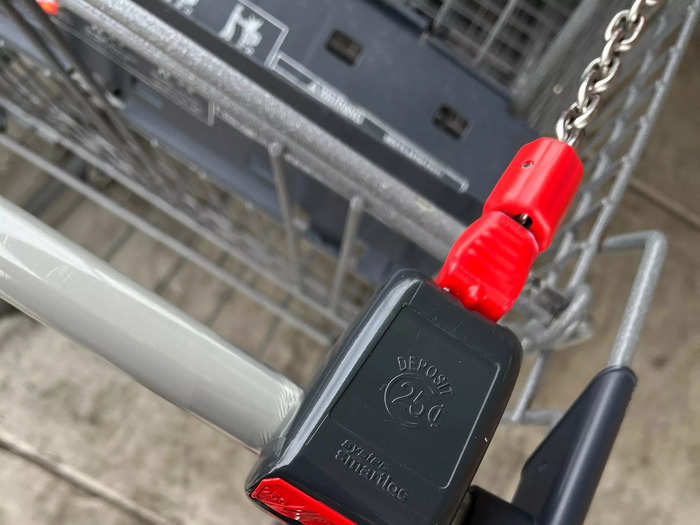
The technique isn't new, particularly on Aldi's home continent, though Tucker Carlson was very impressed by it when he recently encountered it at a Russian supermarket.
Once inside, the first thing I saw was a variety of fresh foods.
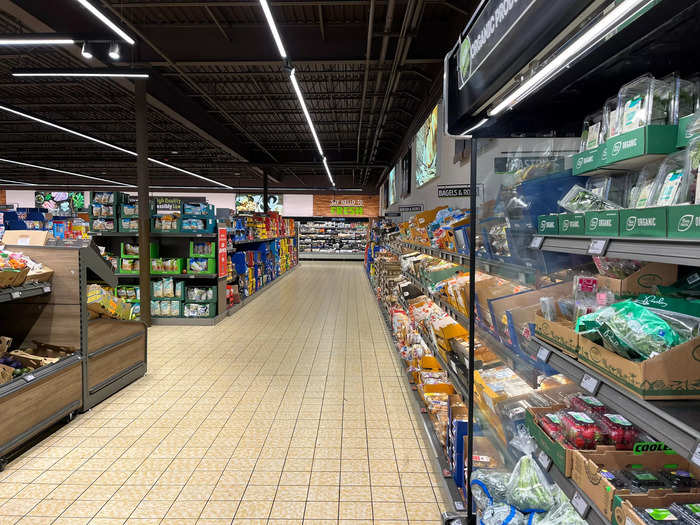
Cooler cases to the right contained everything from strawberries to broccoli, while onions, potatoes, and other produce that can stay at room temperature were on the left.
There were also some prepared foods that just needed to be baked or heated before serving.
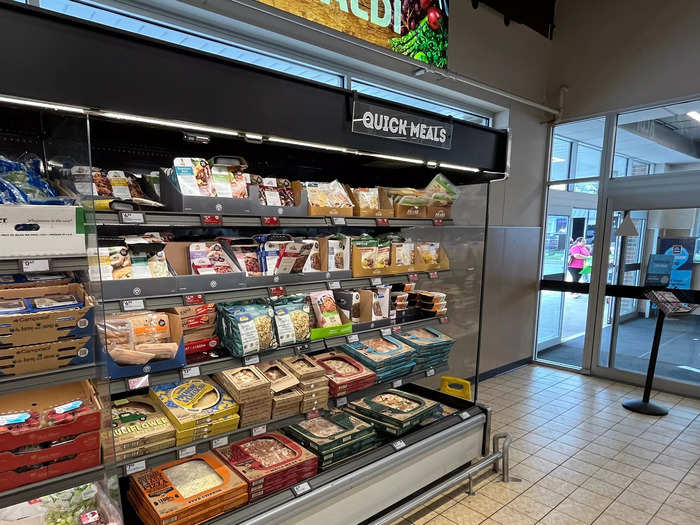
For years, grocery stores have been trying to compete with restaurants by offering dinner options that are easy to serve when you're short on time, and Aldi is no exception.
Included was this large take-and-bake pizza.
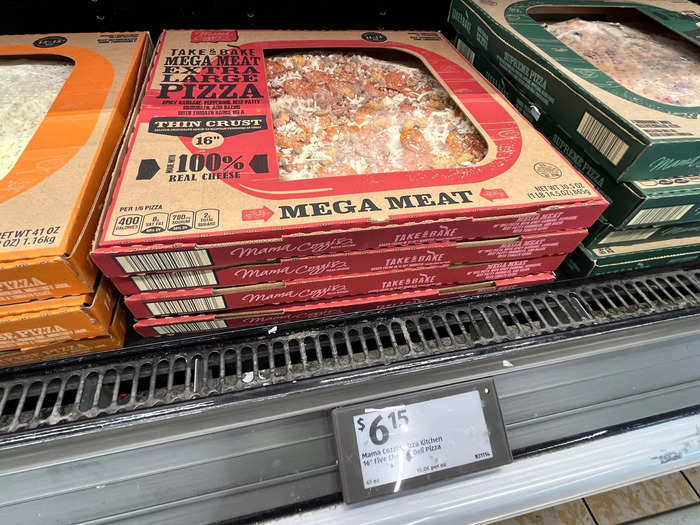
It was large enough that it reminded me of Costco's own take-and-bake pizzas.
It didn't take long to come across Aldi's store-brand versions of popular foods.
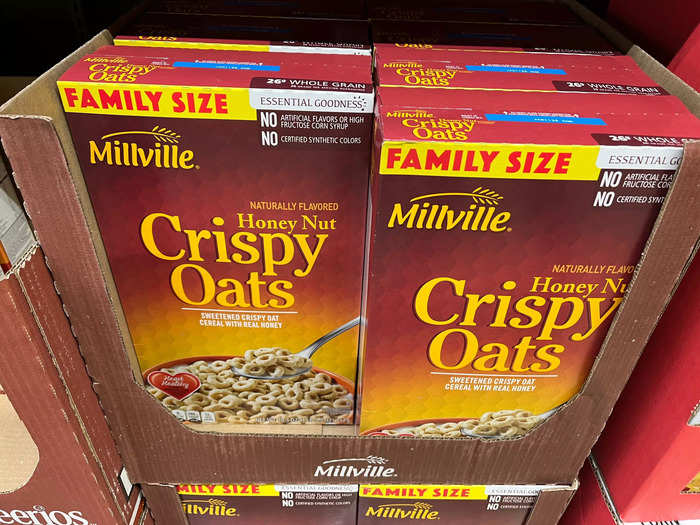
These Cheerios look-alikes were just past the produce section and still sat in the carton they were shipped to the store in. They were selling for $2.65 a box.
But there were also equivalent products from big brands, often right next to Aldi's cheaper version.
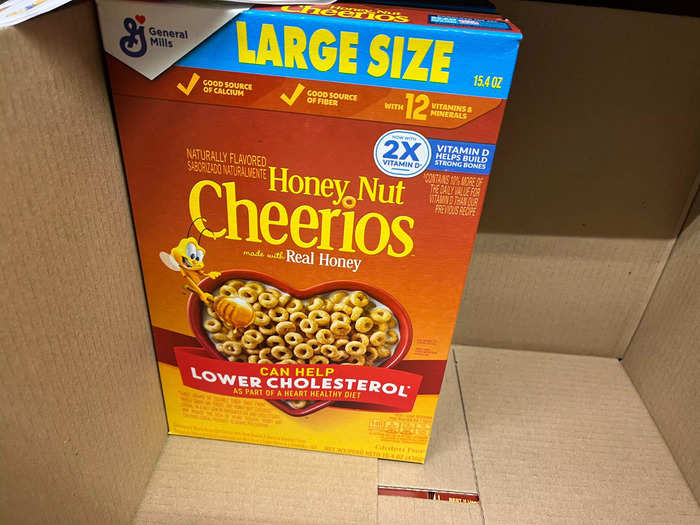
Actual Honey Nut Cheerios were on sale at this store for $4.33 a box, which made the Aldi version seem like a bargain.
Aldi's store brands are key to its strategy, as this poster in the store makes clear.
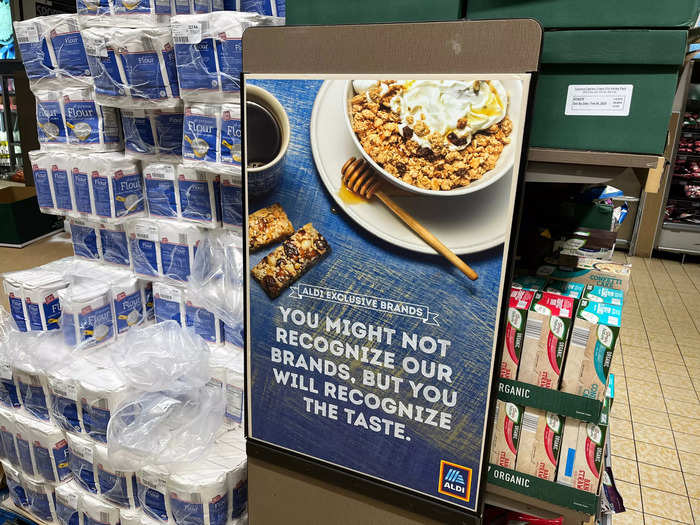
Aldi negotiates its own deals with food companies to cut costs and make the end product cheaper for consumers.
I decided to try these chips, which looked a lot like Doritos to me.
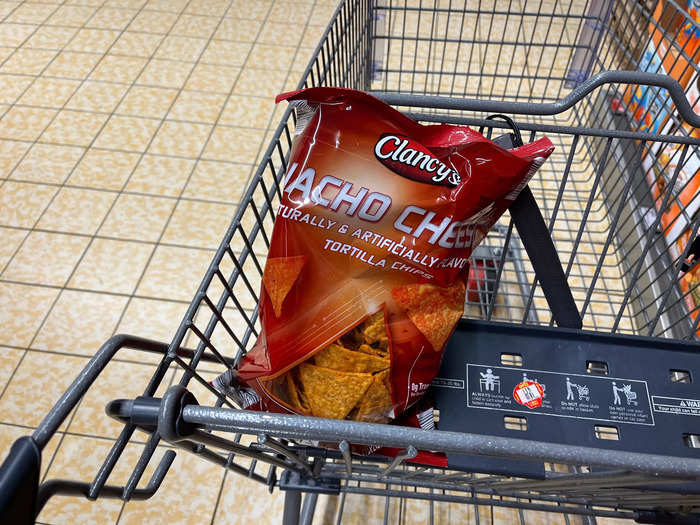
After I got home, I confirmed that they indeed tasted like Doritos. Again, they cost less than the Doritos that you could buy at this store.
There was also signage throughout the store promoting Aldi's lower prices.
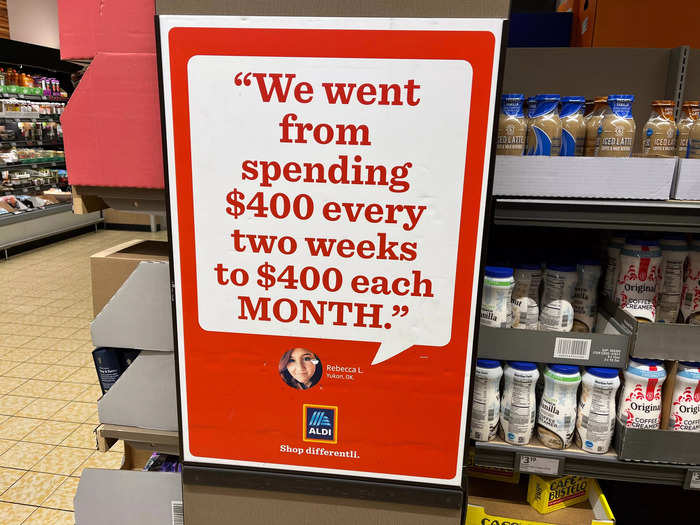
This wasn't my first time at an Aldi, but it seemed like the signage at this store was much more focused on savings than I'd seen at other locations. That's not surprising, given the continued high cost of groceries.
Aldi's claim about being cheaper than rivals seemed to hold up.
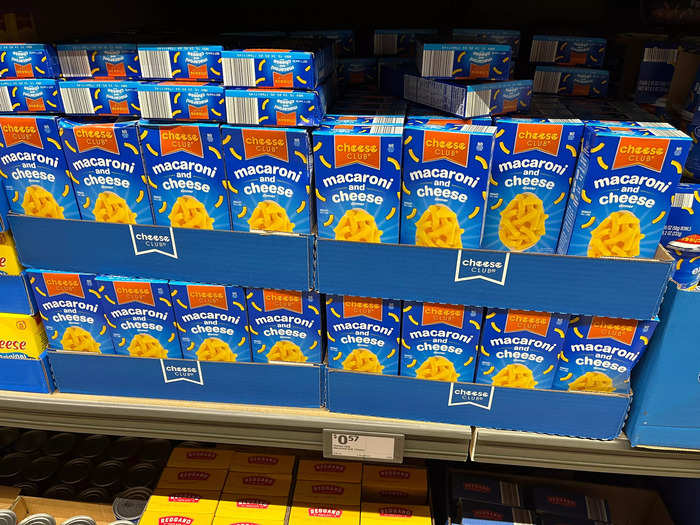
I checked the prices of several items I bought with equivalents at Giant, another grocery store with a presence in the mid-Atlantic.
Aldi's mac and cheese, for instance, was 57 cents a box.
Prices at Giant were higher across the basket of foods I checked.
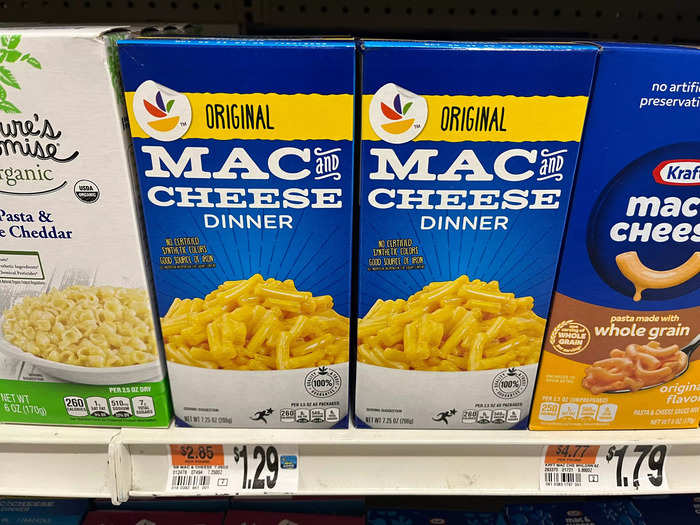
Everything, from cans of chickpeas to grape-seed oil, was cheaper at Aldi. Store-brand mac and cheese at Giant, for example, ran to $1.29 a box.
Aldi even beat out the Family Dollar down the street on many items.
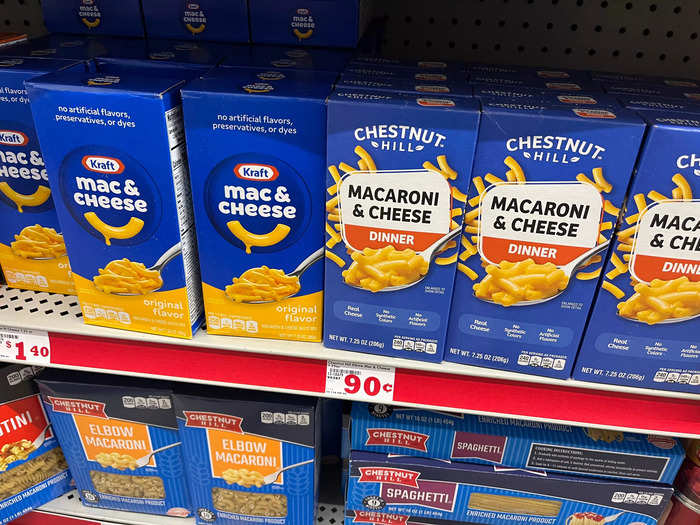
Mac and cheese at Family Dollar was 90 cents a box.
It's a great example of how dollar stores often aren't the cheapest option in town. A study last year by analysts at Bank of America found that Walmart and Aldi were both cheaper than dollar stores.
Not every store-brand product at Aldi was just an imitator.
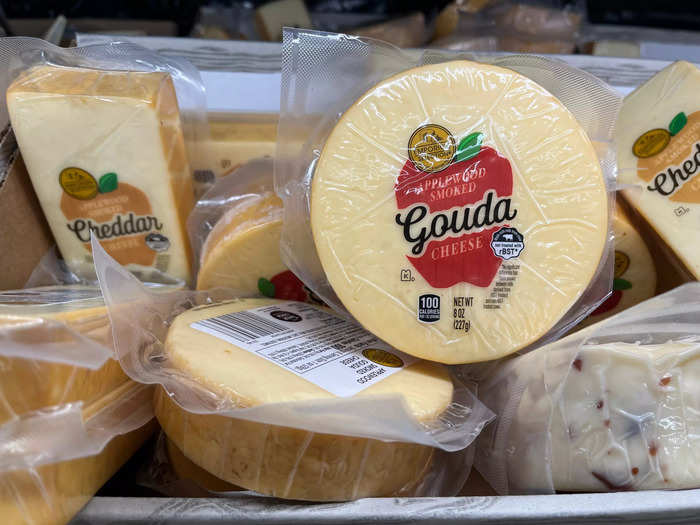
I found a selection of cheeses, from cheddar to smoked Gouda, in a cooler toward the back of the store. Much of it was sold under Aldi's store brands, such as Emporium Selection.
I also found several own-brand products with a German theme in tribute to Aldi's home country.
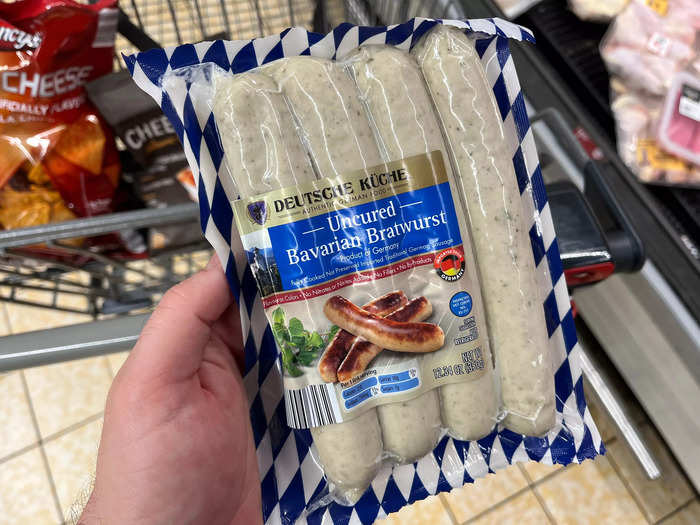
Besides bratwursts, you could also find Aldi-brand spaetzle, sauerkraut, and hazelnut chocolates.
I then headed into the center of the store, where you can find products other than food.
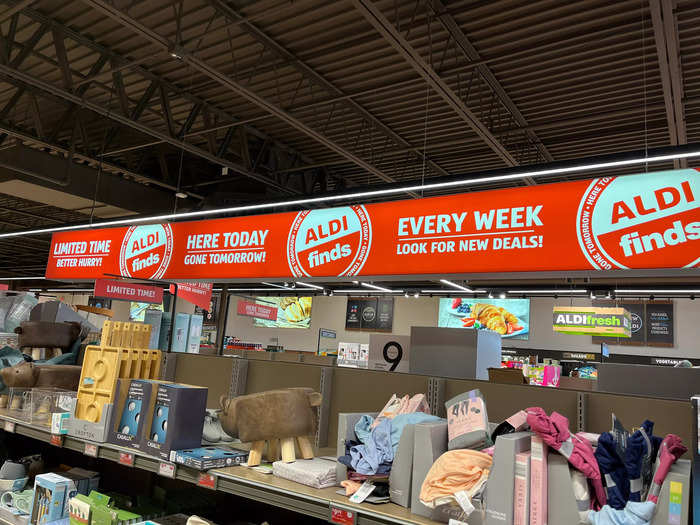
The "Finds" section of an Aldi store includes a rotating selection of merchandise. The signage above those aisles told customers to buy something if they liked it since it could be "here today, gone tomorrow."
I found everything from seasonal merchandise...

Easter baskets, toys, and plastic eggs were displayed on an end cap in the Finds section.
...to kitchen supplies like this bamboo steamer.
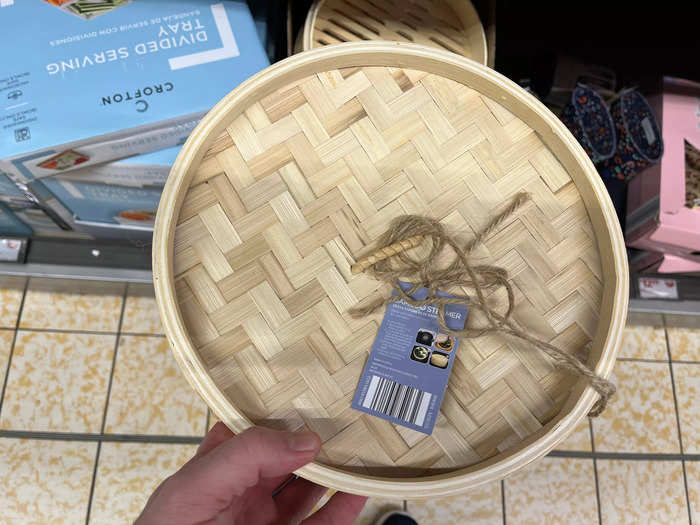
I had been looking for one for a while, so I bought this one for $6.99.
And for younger Aldi patrons, I found this toy set perfect for kids who want to play store.
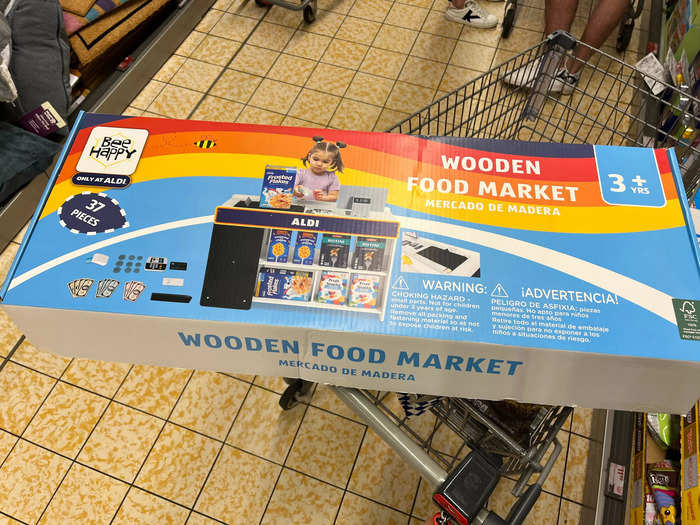
Aldi sells a variety of merch with its own logo and branding. It's even released multiple apparel collections, including hats, sandals, and sweatshirts.
Having seen the shop, I headed toward the checkout area.
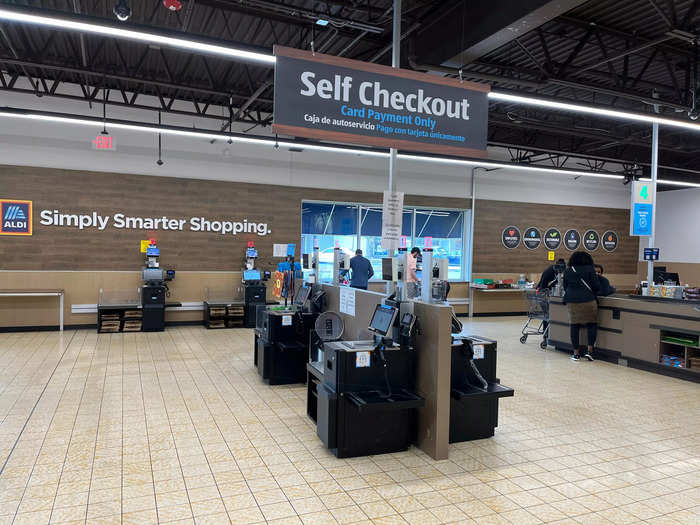
Initially, I headed toward one of the self-checkout kiosks in the middle.
Most of the self-checkout kiosks were closed.
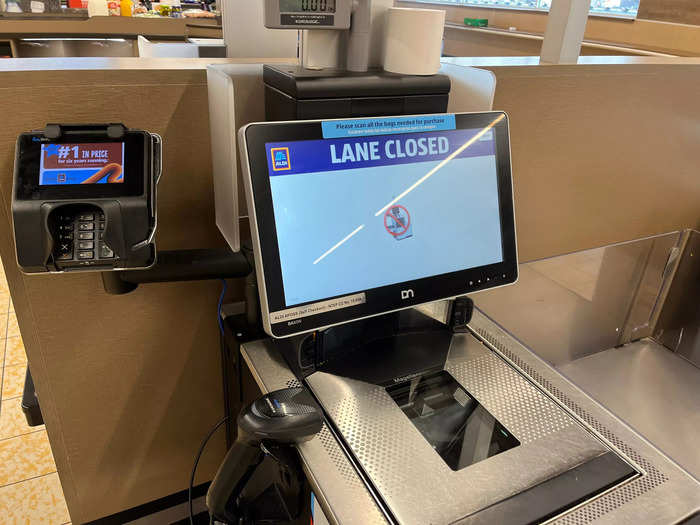
I saw a message at most of this store's stands indicating that they were closed.
So I headed to one of the employee-run checkouts instead.
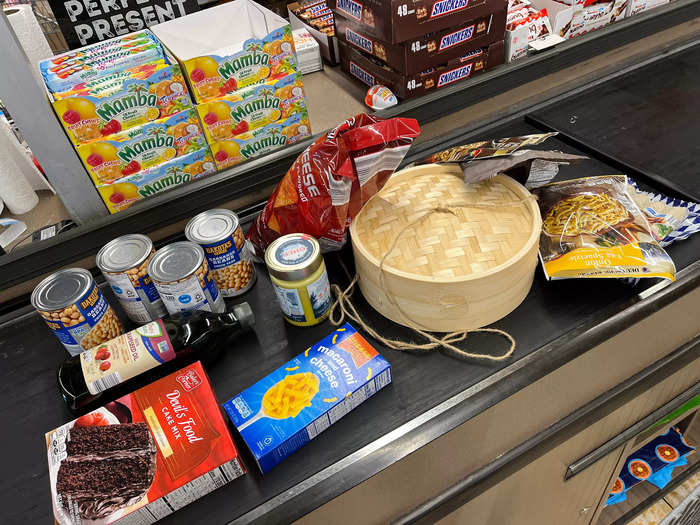
The checkout process is efficient and took just a few minutes.
Now, I just had to bag my own groceries before heading out.
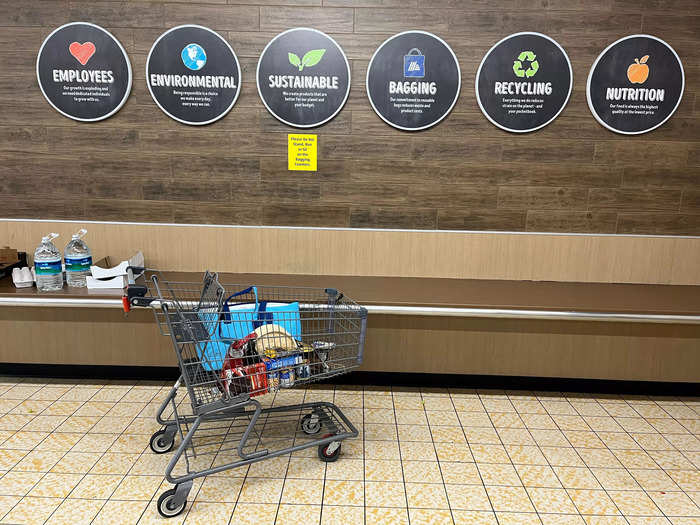
Asking customers to bag their own groceries is another way that Aldi saves money on labor costs.
I made sure to return my cart and reclaim my quarter once I left the store.
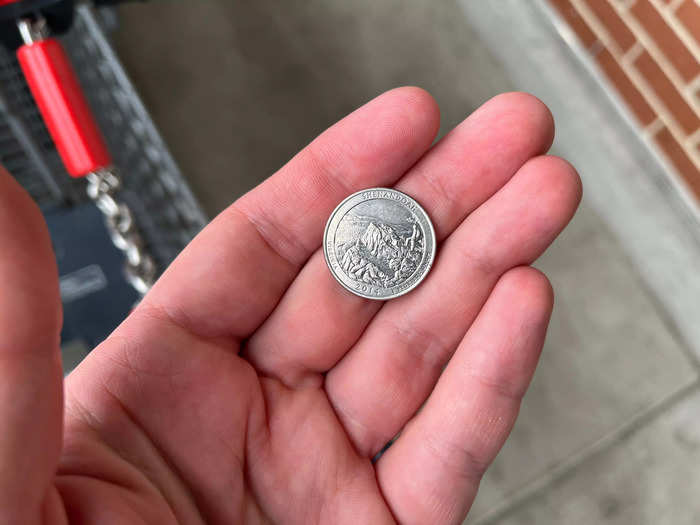
Sharp-eyed readers may notice that this isn't the same coin I put into my cart when I arrived. That's because there was another cart — with another quarter — at checkout that the cashier put my groceries into. After I left, the next person in line got to use my cart and left their own behind, continuing the process.
Overall, I see why Aldi is popular, as well as why the company feels comfortable opening so many new stores.
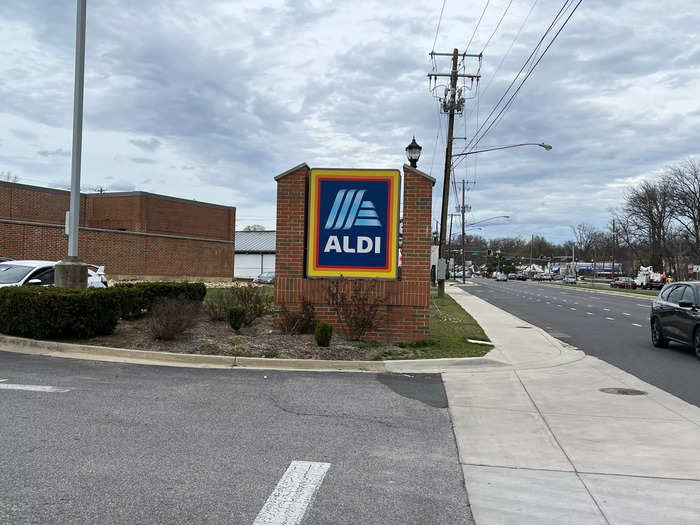
The store I visited met or beat other value-focused grocery stores on price. It also offered a surprising range of foods and items I don't associate with a discount grocer — such as the Bavarian bratwurst and the bamboo steamer.
My takeaway: with inflation still a concern for many shoppers, it seems like Aldi's model fits the times.
Popular Right Now
Popular Keywords
Advertisement